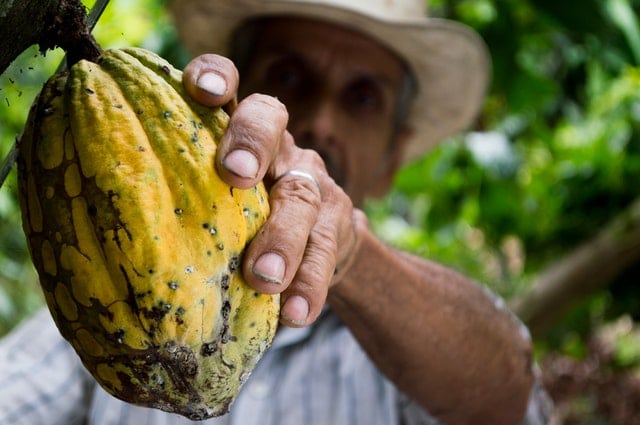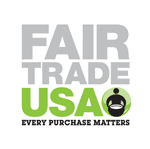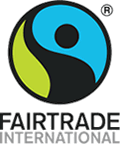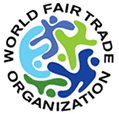
What is Fair Trade, and Does it Matter in Body Care?
Published by Anne Altor on Sep 30th 2017
Free Trade? Fair Trade?
What's the difference, and what does this have to do with your chocolate, coffee and body care products? When I started making soap and needed to buy oils in bulk, I realized I needed a better understanding of what Fair Trade means. I researched cocoa butter and realized that conventionally produced cocoa beans are environmentally destructive, and I found that conventional coconut oil can be socially and environmentally unsustainable. So what is Fair Trade all about? Free Trade focuses on economic growth at the national level and generally works well for large corporations and business interests. In contrast, Fair Trade focuses on trade between smaller scale producers and consumers, with the goals of social, economic and environmental sustainability. Free Trade is driven by import/export agreements between countries, and compensation to producers is determined by market, company and government policies. Fair Trade focuses on agreements between producers and purchasers, aims to drive change by empowering disadvantaged farmers and laborers, and works to provide consumers with ethical and sustainable choices.
A brief history of Fair Trade
The origins of the Fair Trade movement in North America go back at least to the 1940s when the U.S. store Ten Thousand Villages started importing handmade items purchased directly from craftspeople. In the '70s and '80s, U.S. and Canadian businesses concerned about producers formed a group that evolved into the Fair Trade Federation. The World Fair Trade Organization was founded in 1989 with the stated goals of improving the livelihoods of disadvantaged people through trade and providing a forum for the exchange of information and ideas. Fair Trade is mainly an exchange between producers in less developed countries and consumers in the U.S., Canada and the EU.
What are the major Fair Trade products?
Many products can be certified as Fair Trade. The major ones include coffee, tea, chocolate, bananas, cotton, sugar, coconut oil, shea butter, olive oil, flowers, herbs & spices, honey, sugar, wine, soccer & rugby balls and apparel. Most producers are located in Africa, the Middle East, Asia, the Pacific Islands, Latin America and the Caribbean.

Colombian cocoa worker
Who can obtain Fair Trade certification?
Fair Trade certification can be earned by:
Small producers: These are defined as family-based operations and co-ops.
Organizations that use hired labor: Farms, plantations and manufacturers that employ hired workers on a permanent, seasonal, migrant or temporary basis.
Traders: Companies that purchase Fair Trade products for their own use of for sale to consumers.
How does Fair Trade work?
Fair Trade certification is based on standards for producers and traders that specify social, labor and environmental conditions that must be met. The goals of Fair Trade Standards are to:
Ensure producers receive prices that cover the costs of sustainable production.
Provide an additional Fairtrade Premium that can be used for projects to improve social, environmental and economic conditions.
Require buyers (companies who deal directly with producers) to provide capital in advance to producers if needed.
Establish criteria to ensure socially, economically and environmentally just and responsible production and trade.
Establish a Fairtrade Minimum Price for each commodity that buffers producers against changes in market price and that provides for the Fairtrade Premium mentioned above.
Maintain transparency through every step of production and trading, verified by audits (See Oversight below).
Every product labeled as Fair Trade must meet additional standards specific to the commodity.
Fair-Trade organizations
offer certification according to the principles described above. Of these organizations, Fairtrade International, the WFTO and the FTF have multiple national members/affiliates.
Oversight
Fair Trade standards are maintained through Compliance Criteria and audits performed by FLOCERT, which was created as an independent, transparent, internationally accredited certification system. Fair Trade USA audits are performed by SCS Global Services.
Criticisms of Fair Trade
Like just about everything else, Fair Trade is not a black and white issue. The system is not flawless and it has plenty of critics. Fair Trade might work better for some products and producers than others. For every report on problems with Fair Trade, there are stories about how it's making a positive difference. However, it's important to understand the criticisms and to look for ways to improve trading practices. Here are some common critiques of Fair Trade:
Fair-Trade benefits skilled workers and managers but not the poorest, lowest-skilled workers. Poor workers still receive low wages, and the poorest aren't empowered enough to get into Fair Trade markets.
The Fair Trade model does not work for coffee; it encourages marketing of poorer-quality beans and doesn't benefit poor workers. Some Fair Trade requirements, such as a prohibition on using inorganic fertilizer in coffee growing, can reduce agricultural productivity.
Fair Trade guarantees a minimum price to be paid, but not a minimum amount of product to be purchased. Consumers must be willing to buy Fair Trade products, and currently Fair Trade is a very small percentage of the market. So, producers end up having to sell some of their Fair Trade product on the regular market.
Fair Trade Premiums don't always get used in ways that help the poor, who don't always have a say in how they're allocated.
Takeaways
My takeaway from all this is that there are many examples of Fair Trade benefiting producers in poor parts of the world. However, to think that Fair Trade is a flawless solution to sustainability problems is naive. I believe that some products (such as cocoa butter and coconut oil) should only be purchased from Fair Trade or other verifiable sources. These products are otherwise destructive and exploitative. The most important factor is that the product comes from a farm or cooperative that uses ethical and sustainable production practices. Whether they operate under Fair Trade or a different trading scheme isn't as important as the facts behind the production. As purchasers of global goods, we need to diligently seek out ethical sources of materials and have an uncompromising commitment to social and environmental sustainability. Please feel free to share your insights below. I will continue to look deeply into materials sourcing for One Earth Body Care products and to share what I learn.




